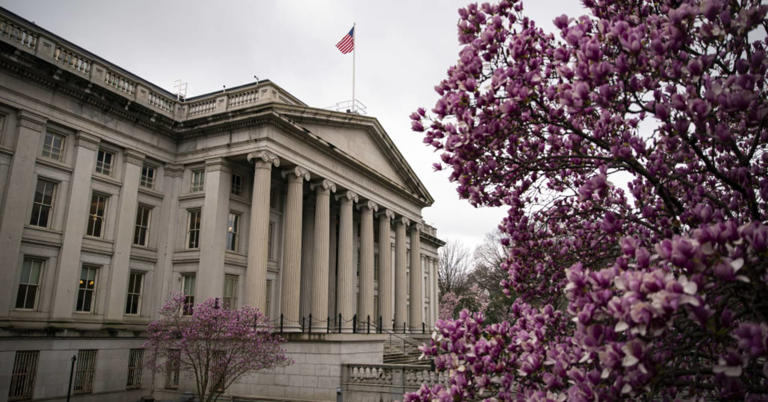Key Takeaways:
- The nation’s debt now stands at nearly $34.4 trillion, as of Wednesday.
- Since June, the last two $1 trillion jumps occurred in about 100 days.
The debt burden of the United States has been growing at an accelerated pace in recent months, with approximately $1 trillion added every 100 days. This trend highlights the significant increase in the nation’s debt load over a relatively short period.
According to data from the U.S. Department of the Treasury, the nation’s debt surpassed $34 trillion on January 4, after briefly touching that mark on December 29. This milestone was reached following the $33 trillion mark on September 15, 2023, and the $32 trillion mark on June 15, 2023, indicating a notable acceleration in the pace of debt accumulation. Previously, it took about eight months for the debt to increase by $1 trillion from $31 trillion.
The U.S. debt, which represents the funds borrowed by the federal government to cover its operational expenses, now stands at nearly $34.4 trillion as of Wednesday. Bank of America investment strategist Michael Hartnett suggests that this 100-day pattern of debt accumulation is likely to persist as the debt moves from $34 trillion to $35 trillion.
Hartnett also points out that the increasing debt levels have led to heightened interest in “debt debasement” trades, with assets like gold and Bitcoin reaching near all-time highs. Gold is currently trading around $2,084 per ounce, while Bitcoin recently hovered around $61,443. Bitcoin experienced a surge in February, marking its best month since 2020, briefly surpassing $64,000 before retracing. The influx of funds into cryptocurrency is poised for a significant increase this year, with an annualized inflow of $44.7 billion noted so far.
These trends underscore the growing concerns surrounding rising debt levels and their potential impact on financial markets, driving investors towards alternative assets like gold and cryptocurrencies as hedges against potential devaluation of fiat currencies.
Moody’s Investors Service downgraded its ratings outlook on the U.S. government from stable to negative in November, citing increasing risks to the country’s fiscal strength.
The agency expressed concerns about the potential impact of rising interest rates on the U.S. economy, particularly in the absence of effective fiscal policy measures to address government spending or boost revenues. Moody’s highlighted its expectation that the U.S. fiscal deficits would persist at significant levels, which could substantially undermine the affordability of the country’s debt.
This outlook revision underscores the challenges facing the U.S. in managing its fiscal policies and addressing its debt burden. It serves as a warning signal regarding the potential consequences of prolonged fiscal imbalances and underscores the need for proactive measures to ensure the long-term sustainability of the nation’s finances.
